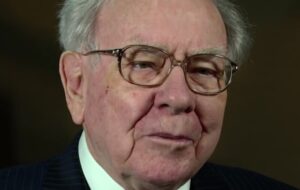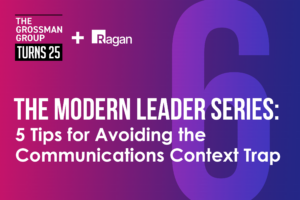Thought leadership programs: What’s best for your company?
How to avoid common thought leadership misses

Adam Kiefaber is an experienced communicator, who has led PR teams for Fortune 500 companies in payments and financial services. Previously, he spent nearly 10 years as a journalist working for The Cincinnati Enquirer, The Cincinnati Post and CNN.
Many companies want to provide thought leadership, and nearly every executive wants to be seen as a thought leader – but doing it well is an art form.
It is easy to spot the misses — articles that are boring to read and placed on the wrong channels, thought leaders who aren’t really qualified to represent their company — but how do you build a successful program from the start?
On this front, I recently interviewed a pair of experts – Ravi Sunnak, who specializes in strategic communications for the C-suite as an executive vice president at Porter Novelli, and Nick Huber, a top LinkedIn voice on thought leadership who serves as a corporate content strategist and journalist.
Sharpen your content and your process
Let’s take a closer look at how boring content is created. Intriguing, right?
The first miss is focusing on where the content shows up instead of how the message comes through. Whether they are pitching to earn coverage or negotiating to pay for it, when marketers and communicators focus most of their attention on placement and not messaging, the mismatched priorities build the conditions for boring content. Start with the messaging first and the placement second.
But before you get moving – even if priorities are aligned – you need talented content creators and the best writers to create great content.
“Most people can write, but that doesn’t mean they should write professionally,” said Huber, who still freelances for the Financial Times. “It is sort of like looking over the shoulder of a developer as they write code and thinking that you can jump in and do it better yourself.”
Now, watch out because a good writer can be ruined by a poor process. The order of reviews, and the type of people and roles in the process, can kill the quality of your content and cause you to miss deadlines.
“The quality of thought leadership content has gotten so patchy,” Huber said. “Most of the processes in place have too many people involved. We spend so much time editing, rather than writing. As a result, we see and hear a lot more jargon and not enough of the story.”
No matter how talented your writers or content creators are, they are set up to fail if your approval process stinks. Taking as much ownership of the process as you can and showing how strong your content can be goes a long way in avoiding those unneeded edits.
Focus on the right topics
Like Huber, I have an extensive background in journalism. While he worked across the pond for the BBC, Financial Times and The Guardian, I spent more than nine years working for CNN, The Cincinnati Post and The Cincinnati Enquirer stateside. Despite our distance in locales, we share a mutual contempt for corporate jargon and an aversion to boring thought leadership content – which we feel is a waste of time to both read and create.
As former journalists, there are two basic questions we always ask before deciding to write about a topic:
- Why do I care about this?
- Why now?
“To create strong content, don’t focus on the five topics you think you need to cover because the company is excited about them,” Huber said. “Instead, go back to the basics of journalism and write about topics that excite you and that your customers are most likely interested in.”
Media coverage and influencer content are great indicators as to what your audience cares about. Ask yourself, how would your thought leadership program support and add value to the stories that are being told regularly by top-tier publications?
And remember, the content you create doesn’t just have to be told by the press – you can tell it on your own website, on social channels or through your partners’ digital channels.
Finally, get strategic about placement
Cleaning up your processes, improving the quality of your content and sharpening your focus on topics that matter are essential to having a strong thought leadership program.
Once you have those things in order, then you are ready to get strategic about placement.
“It is important to redefine how we as the communications industry approach thought leadership programs,” Porter Novelli’s Sunnak said. “I no longer think about working with leaders as ‘executive visibility,’ but rather ‘executive influence.’
“It should be about delivering precision-focused thought leadership which takes into account your target audience, and not just trying to secure as much coverage as possible in media and at conferences that won’t move the needle.”
Leveraging data helps set your focus on the right placements, takes away subjective opinions and allows you to push back when your thought leaders demand the wrong things – or worse, the same things.
“We all have our favorite channels for activations such as media, social or conferences, but it is not effective communications if your company has their whole leadership bench showing up in the same space,” Sunnak said. “Data helps determine each executive’s priority platforms and allows for a more impactful thought leadership program.
“For example, every business leader wants to be interviewed by The New York Times or Wall Street Journal, but what if you had the data that shows a trade publication is the better place for thought leadership for influencing the influencers who matter most?”
It may sound simple, but if you have a clear focus on the right topics, the ability to create strong content and to control the creation process, as well as being able to be strategic as to where your content should be, you will have the foundation set up to have the right thought leadership program.






